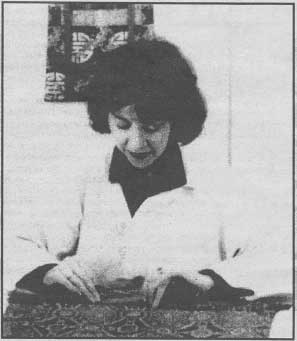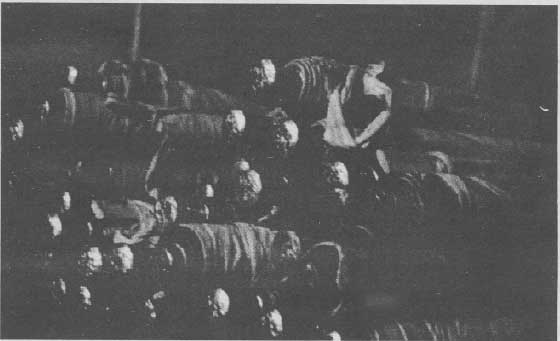| The following article is from the Spring, 1999 issue of the Snow Lion Newsletter and is for historical reference only. You can see this in context of the original newsletter here. |
by Ann Shaftel
Conservation of thangkas has been my major work since 1971. My approach to the conservation of thangkas is based on a combination of current scientific knowledge combined with traditional respect and training. I was trained as a thangka painter as well as an Art Conservator. My own Buddhist meditation practice began 30 years ago.
Who sends thangkas for me to work on? The thangkas are owned by monasteries, great Buddhist teachers, major museums, private collectors and individual Buddhist practitioners. Their approaches to handling their thangkas vary greatly; as does the age, style, iconography and condition of each thangka that arrives for conservation.
When a thangka arrives at my laboratory for conservation treatment, I thoroughly document its condition with a lengthy written report and technical photography. Written and photographic documentation is continued throughout the actual conservation treatment.
Because my clients' approaches to their own thangkas are so diverse, communication with the owner of the thangka is essential before treatment begins, during the actual work and beyond. I provide the owner with suggestions for the care of each individual thangka and answer any questions they might have about safe procedures for handling, packing, transport, and environmental conditions. Preventing damage is of utmost importance.
For example, a monastery in Sikkim would require different advice on thangka care than a major museum in San Francisco, or an American Buddhist who has one thangka in a home shrine room. I am often asked to travel to advise on thangka collections in situ.
Thangkas come to my laboratory in many forms. Some arrive complete with painting, mounting, cover, dowels and decorative dowel knobs. Some arrive simply as paintings with no mountings.
The relation of a thangka's painting to its mounting is interesting. Sometimes, there are notations on the mountings which provide valuable information about the artist, the monastery and the thangka's original location in the shrine hall. It is often possible to ascertain if the current mounting is in fact the original mounting for a picture panel. Carefully look on the edges of the painting support where several rows of stitch holes can indicate that the mounting has been changed. Tailors have been known to sew second or third mountings with a window so small that it covers sections of the painting composition, for example, covering the hat of the top central lineage figure.
There are many interesting things about every thangka. I truly love my work. Conservation of thangkas is delicate and labor-intensive work. Each thangka is unique, and each conservation treatment is designed for the specific thangka presented to me by its owner. Every thangka is worthy of care.
Ann Shaftel, MSc, MA is an Elected Fellow of the International Institute of Conservation, the American Institute of Conservation and a member of the Canadian Association of Professional Conservators. Ann holds the MA degree in Asian Art (thesis on Buddhist iconography), the MSc in Conservation, and a Conservation Certificate from UNESCO in Rome. She became interested in thangkas while in elementary school. She is considered a worldwide expert on the conservation treatment of thangkas, and has worked on thangkas at major monasteries and many major museums including the Asian Art Museum of San Francisco, Nelson-Atkins Museum, and the American Museum of Natural History. Ann is also a practicing Buddhist.
Please feel free to contact Ann with any questions concerning the care of your thangka: tel. 902-4222327.

Ann working on a thangka in her laboratory.

In a Himalayan monastery, these thangkas are stacked on an empty throne. Their own weight is cracking the cloth support and causing the ground and paint layers to crumble. The thangkas will be put away for storage in moldy trunks. In many traditional monasteries in Asia, thangkas are regarded, with respect but handled and stored and displayed in conditions which eventually cause serious damage.

